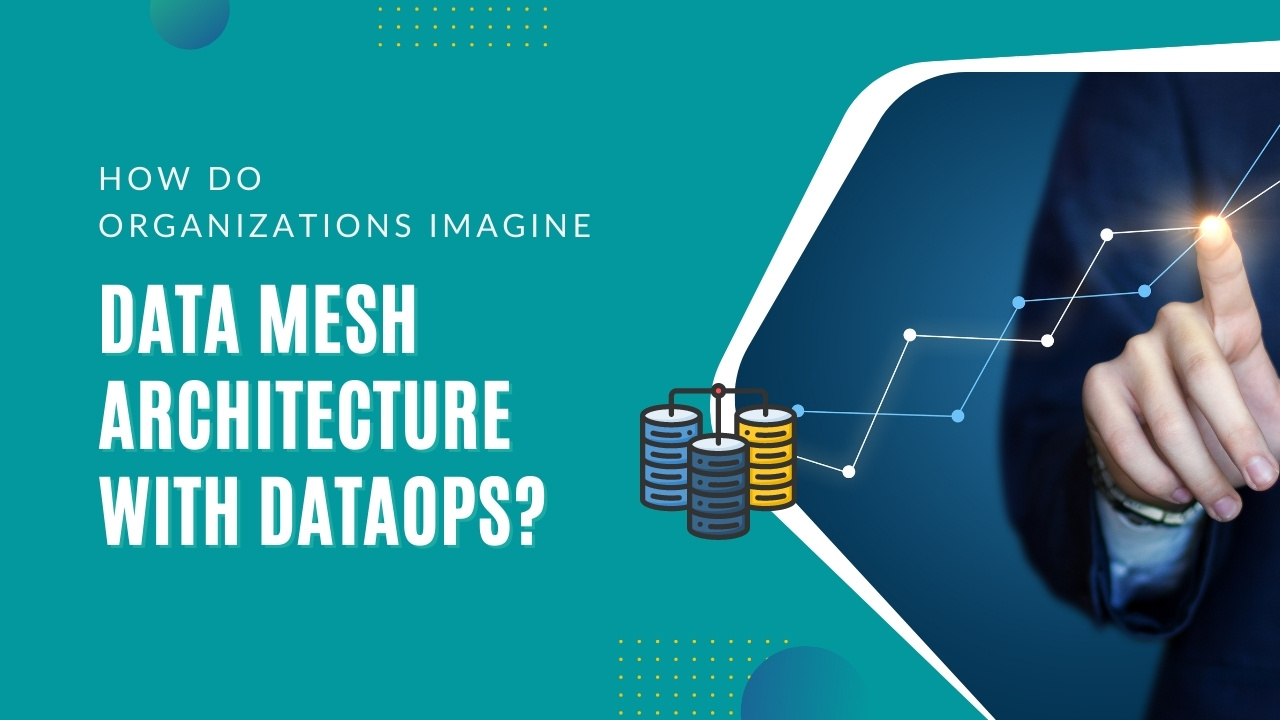Data Mesh can be defined as a decentralized architecture that arranges data by specific business domains and teams using a self-service approach. It has been designed to provide more ownership and responsibility to the data product teams, and it is hoped to provide more effective outputs promptly. What is DataOps? Is it simply an enabler for more sophisticated design patterns like Data Mesh? If we continue thinking in the DevOps way – considering how the end users’ involvement in a product lifecycle went from passive to truly active, we begin to think that it’s more than that. DataOps is always at the heart of our Data Mesh implementation. DataOps is essential for any company which wants to implement Data Mesh. A distributed architecture needs a tool like DataOps.live to let a regular data engineer easily steer the complexity of CI/CD, code release, and orchestration.
Data mesh is a decentralized framework
One can quickly see how data mesh dovetails with #TrueDataOps, and with the competencies and suppleness of the DataOps.live platform. DataOps.live prudently aligns with the data mesh requirements & the opportunities it offers, especially if you consider the abilities added in the latest release that allows enterprise data engineering and management at scale. You can think of Data mesh as a decentralized socio-technical framework. And for this reason, it needs the right mindset and organizational structure to work. This is not about IT doing its job; it’s more about enterprises having a genuine hunger for change, being receptive to a decentralized approach, and accepting a data-driven culture from top to bottom. Everyone in the organization must be on board, with agreed-upon roles and responsibilities. And at least you need to have high-quality data, and the data products created should be discoverable and useable by everyone in the internal team.
Data Products and the Role of DataOps
The old way is slow and full of risks. IT needs to learn precisely how the data should be used, including the rules and factors put on it for it to be valuable to users. And this is precisely the place where the data mesh concepts like self-service used by domain teams, convenience and consumability, and amalgamated governance come to the front. All these ideas are aligned with the principles of #TrueDataOps, which reinforce the practical application of the DataOps.live platform. You need dependable, repeatable, standardized processes for your domain teams, particularly when it comes to data pipelines, if you’re going to shape consumable data products positively and instill that mindset in domain teams. This comprises automation to build new data products and combines them with existing ones. It’s very problematic, if not impossible, to attain your vision for data mesh and all that it involves without having a controlled approach such as this, which means #TrueDataOps.
Improve the Communication, Integration & Automation of data flow across your Organization
Calculate your DataOps ROI
Data mesh & DataOps crossover
One must focus on component design and maintainability to give rise to reusable data products: a modular way to establish, reorganize, and reuse data. You will need to build it yourself from scratch. You can use your colleagues’ work and blend that with your data. You can treat it all like a giant box of Lego: you have different pieces, sizes, colors, and types to help you make exactly what you need at that exact moment that you can later take apart and regroup. Again, all this is about evolving a new mindset, which can offer a steep learning curve for the domain teams.
The crossover between data mesh and #TrueDataOps endures with governance, safety, and change control; constructing sharable data products requires governance and security by design. For data mesh to work, as data products are meant to be consumed and shared, the stage has to make it easy while safeguarding the data is still controlled and secured. Automatic testing and monitoring are also essential to move fast, stay agile, and ensure that you don’t break data products already in use. And, of course, include teamwork and self-service, authorizing domain teams to make the data products and allowing consumers to learn and use them, all within an influential amalgamated governance framework. ISmile Technologies’ scalable & multi-cloud solutions help businesses accelerate their journey to AI-powered automation and improve data quality & real-time data governance to enable the far-reaching business potential of AI & ML. Schedule your free assessment today.








